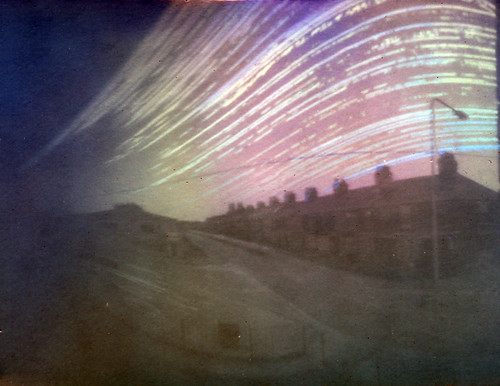You'll need:
- A bottle of hydrogen peroxide. You can get this from most pharmacists. Try and get 9%, but 6% will do.
- Dried baker's yeast.
- Washing up liquid.
- An empty plastic bottle (500ml or so).
- A glass with a 20ml of water in it.
- A teaspoon.
Safety:
Hydrogen peroxide is a mild bleach (which is why its used to make your hair go blond). Be careful with it and don't get it in yours eyes. Best get some adult supervision for this one. And it makes a bit of a mess so do it outside.
What to do.
1. Put about 2 teaspoons of yeast into the glass with the water. Mix it about until it looks like brown muddy water.
2. Squirt about 2 teaspoons of washing-up liquid into the plastic bottle.
3. Pour 50ml of hydrogen peroxide onto the washing-up liquid.
4. Pour the yeasty water into the plastic bottle. Stand back and ...
What's going on?
Remember the chemical formula for water? H2O, meaning water is made from two hydrogens and one oxygen. Well hydrogen peroxide is almost the same except its got an extra oxygen, so its formula is H2O2. But whilst water is very stable (remember how we needed to put electricity through water to break it down in the hydrogen and oxygen), hydrogen peroxide is unstable, it slowly decomposes to water and oxygen. However when the yeast is added to the hydrogen peroxide that extra oxygen gets released really quickly and you end up with loads of oxygen gas (the washing up liquid is just there so that the gas gets trapped in all that foam).
So why does adding yeast result in the oxygen being released so quickly? Well yeast contains an protein called catalase. It looks like this.
Catalase is a type of protein called an enzyme. Enzymes1 speed up specific chemical reactions. In this case the reaction is:
2 H2O2 → 2 H2O + O2
Which is just a way of saying that 2 hydrogen peroxide molecules turn into two water molecules plus 1 oxygen molecule. The really astonishing thing about catalase is how fast it works. One catalase molecule can break down 40 million molecules of hyrodgen peroxide every second!
1 The word enzyme comes from the greek ενζυμον, meaning "in yeast". Plus things that speed up chemical reactions are called catalysts, hence the name catalase. So if you follow the etymology of these things you end up going around in circles.
















